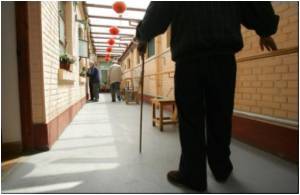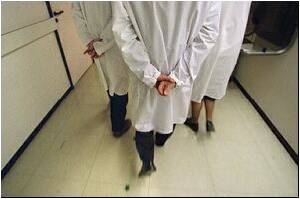
The study examined Medicare data from 2006 representing more than 4.5 million patients seen by nearly 70,000 physicians in 51 hospital referral regions throughout the country representing both urban and rural locations, and covering 20 percent of the United States. Researchers used the data to define natural networks based on which doctors are sharing patients with which other doctors.
"This the first time physicians have been mapped in this 'big data' way. By taking advantage of passively collected information found in insurance data across the country, we can develop insights into how physicians work together to care for patients that previously have not been possible," says lead author Bruce E. Landon, MD, MBA a member of the Division of General Medicine Primary Care at BIDMC and Professor of Health Care Policy at Harvard Medical School. "This is in contrast to the often laborious alternative of collecting similar data through surveys of physicians in specific organizations, which would be time consuming and expensive and only result in limited data about that particular organization."
Landon and his team believe there's a lot to be gleaned from the information in the realm of network science, the study of complex systems united by physical, biological and social phenomena.
What they found is that physicians "tend to cluster together along attributes that characterize their own backgrounds and the clinical circumstances of their patients," still, there is great variability across the country in how physicians share patients. For example, doctors in Albuquerque, NM were mostly connected to other physicians from within their own hospitals and less likely to share patients with physicians from neighboring hospitals, whereas, in Minneapolis, MN physicians were more likely to share patients both within and across hospitals.
In a previous survey study, the authors determined that physicians who shared more patients in these same Medicare administrative data were more likely to endorse having a true information-sharing relationship when compared to physicians who shared few or no patients. This previous study validated the concept of using patient sharing in administrative data to identify physician network connections.
Advertisement
Studying these groups can help researchers learn how new ideas and practices spread.
Advertisement
The data also offers a whole new way of understanding influences on practice that lead to variability in health care across geographic areas.
"We see, among other things, different treatment models, different costs, different rates of medical error. We know that variability exists, but right now we don't know what causes it," says Landon. "By looking at these types of data we can begin to ask if some of these differences are attributable to the very structure of the network. So maybe by influencing the configuration of the network, it may be possible to improve patient safety, for example."
Recognizing shared patient networks may also have healthcare policy implications.
In the landscape of healthcare reform much discussion focuses on the creation of accountable care organizations, a model where groups of doctors and other healthcare providers are given incentives to team up, share information, and provide high quality care for groups of patients.
"ACOs most typically are formed in a top down manner by existing organizations," says Landon, "But the natural networks we've identified could be a more rational way of identifying organizations that are ready to become ACOs by using this bottom up approach to identify organic groups of doctors who are already interacting with each other, who know each other well and understand a shared patient base."
In an accompanying JAMA editorial, authors Elliot S. Fisher, MD, MPH and Valerie A. Lewis, PhD both of Dartmouth Medical School write, "it is clear that meeting physicians' professional responsibility to each patient will require new ways of working together. Further research along the lines developed by Landon and colleagues should help bring useful insights to health care. More collaborative models of care will help both physicians and patients when the exam door closes."
This analysis is limited by time frame. The data was culled from a single year and it may be beneficial to look at trends across multiple years. Additionally, since the data is pulled from Medicare information, where the average patient age is 71, further studies would be necessary to determine if the same physician connections bear out with a younger patient population.
Source-Eurekalert









